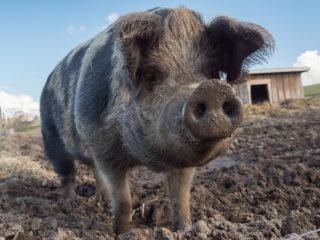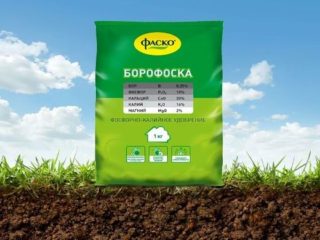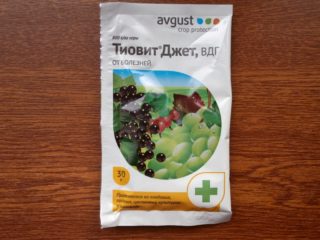Content
- 1 Composition and release form of the herbicide Napalm
- 2 Operating principle
- 3 Advantages and disadvantages
- 4 Preparation of working solution
- 5 Instructions for use of herbicide Napalm, VR
- 6 Speed and duration of exposure
- 7 Compatibility with other tools
- 8 Security measures
- 9 Analogues of the herbicide Napalm
- 10 Conclusion
- 11 Reviews of the weed killer Napalm
Herbicide Napalm is a universal remedy that helps in the fight against cereal and dicotyledonous weeds. The drug is very effective, the first result is noticeable within 3-4 days after treatment. One spraying per season is sufficient.
Composition and release form of the herbicide Napalm
Napalm is a pesticide whose active ingredient is glyphosate. It is also called isopropylamine salt. The product is released in the form of an aqueous solution. The concentration of the active substance is 360 g/l. Packaged in containers of various sizes, including 20 liter canisters.
Napalm herbicide is used to protect various crops:
- sugar beet;
- potato;
- soy;
- grape;
- citrus;
- corn;
- cabbage;
- sunflower;
- fruit.
It helps well in protecting against annual cereals and dicotyledonous weeds:
- birch;
- sow thistle;
- horsetail;
- wheatgrass;
- bluegrass;
- forget-me-not;
- henbane;
- chicken millet;
- common broom;
- wild oats;
- shepherd's purse;
- spurge and others.
The manufacturer and registrant of the herbicide Napalm is the Russian company RosAgroKhim LLC.
Avoid exposure to direct sunlight and keep away from children. The shelf life is five years from the date of production.
Operating principle
The active component of the herbicide Napalm is glyphosate. It belongs to the class of organophosphorus compounds (formula C3H8NO5R). It is a contact and systemic type pesticide. It penetrates into weed tissue through direct contact after spraying. But at the same time, it does not remain on the surface, but penetrates further through the vessels into all departments, which leads to the total death of weeds.

Herbicide protects crops from most common weeds
Once glyphosate enters the cell, it destroys the enzyme acetylcholinesterase. As a result, metabolic processes are disrupted, causing tissues to gradually die. The first signs of damage are noticeable after three days, and final death - after 5-10 days.
Advantages and disadvantages
A review of Napalm herbicide and customer reviews shows that this product has several tangible benefits.

Herbicide Napalm is one of the few drugs that has no waiting period
Pros:
- very wide spectrum of action - cereals, dicotyledonous weeds, annual and perennial;
- the product is effective even in the destruction of difficult-to-eradicate weeds;
- has high biological activity;
- the first result is noticeable within 3-4 days after treatment;
- low toxicity to humans and bees;
- the active ingredient quickly decomposes in the soil, it is not dangerous for beneficial plants and does not accumulate;
- not only destroys the root system, but also prevents the re-growth of layering.
Minuses:
- the period of protective action is short - about 15 days;
- cannot be used in water protection zones;
- conditional disadvantage - the working solution cannot be stored for a long time, it must be used at a time.
You can go out to harvest the crop literally immediately after processing. At the same time, experienced gardeners recommend waiting at least 2-3 days.
Preparation of working solution
Knowing the composition of Napalm and the required proportions, you can prepare a solution for treatment at home. You should proceed like this:
- Put on gloves.
- Measure out from 40 to 80 ml of product.
- Dissolve in a small volume of water.
- Mix thoroughly.
- Then bring to a total volume of 5 liters.
This amount is enough to cultivate one hundred square meters of land. Accordingly, from 80 to 160 ml of the drug are taken per standard bucket. This volume is used to spray plantings over an area of two acres. Although there may be exceptions to this rule, specific consumption rates are described below.

To prepare the solution, it is enough to measure 40-80 ml per 10 l
Instructions for use of herbicide Napalm, VR
Napalm herbicide is used to treat different crops, and dosages differ depending on the object. For example, to protect fruit, citrus and vineyards, a solution is prepared in a ratio of 80 ml per 10 liters. Spraying is carried out once a season in the early stages of weed growth (height up to 15 cm). The finished solution is consumed in an amount of 5 liters per hundred square meters.
To treat the same crops against perennial grass weeds (for example, pearl barley, bluegrass), a more concentrated solution is prepared - 120 ml per 10 liters.The consumption rate is exactly the same: this volume is enough for two hundred square meters of planting.
To protect potatoes from cereals and dicotyledonous weeds, prepare a solution of Napalm herbicide in a ratio of 40-60 ml per 5 liters of water. Spraying begins a few days before germination. In this case, the number of treatments is one procedure per season.
When preparing areas for sowing melons, potatoes, fruits and berries and other crops, prepare a solution in a volume of 80 ml per 10 liters. Spraying is carried out in the post-harvest period. Standard consumption is 5 liters per hundred square meters.
When carrying out treatment to protect against perennial grass weeds, the rules are the same, but the amount is increased to 120 ml per 10 liters. This volume of Napalm herbicide is enough for two acres.
To treat areas not intended for planting (for example, along roadsides, along fences and other buildings), prepare a solution based on 80-120 ml per 10 liters. It is better to spray weeds at an early stage of germination.
Speed and duration of exposure
Herbicide Napalm has a high speed of action. It penetrates plant tissue and moves through blood vessels, so the first signs are noticeable within 3-4 days from the moment of treatment.
Massive death of weeds is observed after 15 days. First, the leaves begin to turn yellow, after which they turn brown and gradually fade. The period of protective action is two weeks.

After treatment, you can hill up potatoes or carry out other work on the ground after 15 days
Compatibility with other tools
The instructions for the drug Napalm also contain such an important characteristic as compatibility with other drugs. The drug is compatible with most other herbicides, so it can be used in different tank mixtures.
It is recommended to conduct chemical compatibility testing first. This is especially important in cases where the drugs provide an acidic or alkaline environment.
Security measures
The drug is a low-toxic product - hazard class for humans and bees - 3. However, when preparing the solution, as well as during the treatment itself, it is important to follow standard safety measures:
- Wear masks and gloves.
- Exclude access to the site for children and pets.
- Do not apply in rainy or windy weather.
- Do not eat, drink or smoke while spraying.
- During processing, close the doors and windows of the greenhouse if it is nearby.
- If the solution gets on the body, wash with soap and water.
- If splashed into eyes, wash under running water.
- If the solution gets inside, take several tablets of activated carbon and drink water. If symptoms of poisoning appear, seek emergency help.
Therefore, you need to prepare such a volume that you can realistically use it at one time.
Analogues of the herbicide Napalm
The herbicide Napalm has quite a few analogues:
- "Glyfogan";
- "Otaman";
- "Roundup";
- "Glyphate";
- "Glyfovit."

"Otaman" is one of the powerful analogues of "Napalm"
They also contain organophosphorus compounds. Therefore, the operating principle is similar. However, the dosage, frequency of treatments and other indicators may differ.
Conclusion
Herbicide Napalm has proven its effectiveness in protecting fruits, citrus fruits, potatoes and a number of other crops. It has a long shelf life. Moreover, the drug is safe for humans and bees. It does not accumulate in the soil and decomposes in just two weeks.
Reviews of the weed killer Napalm








